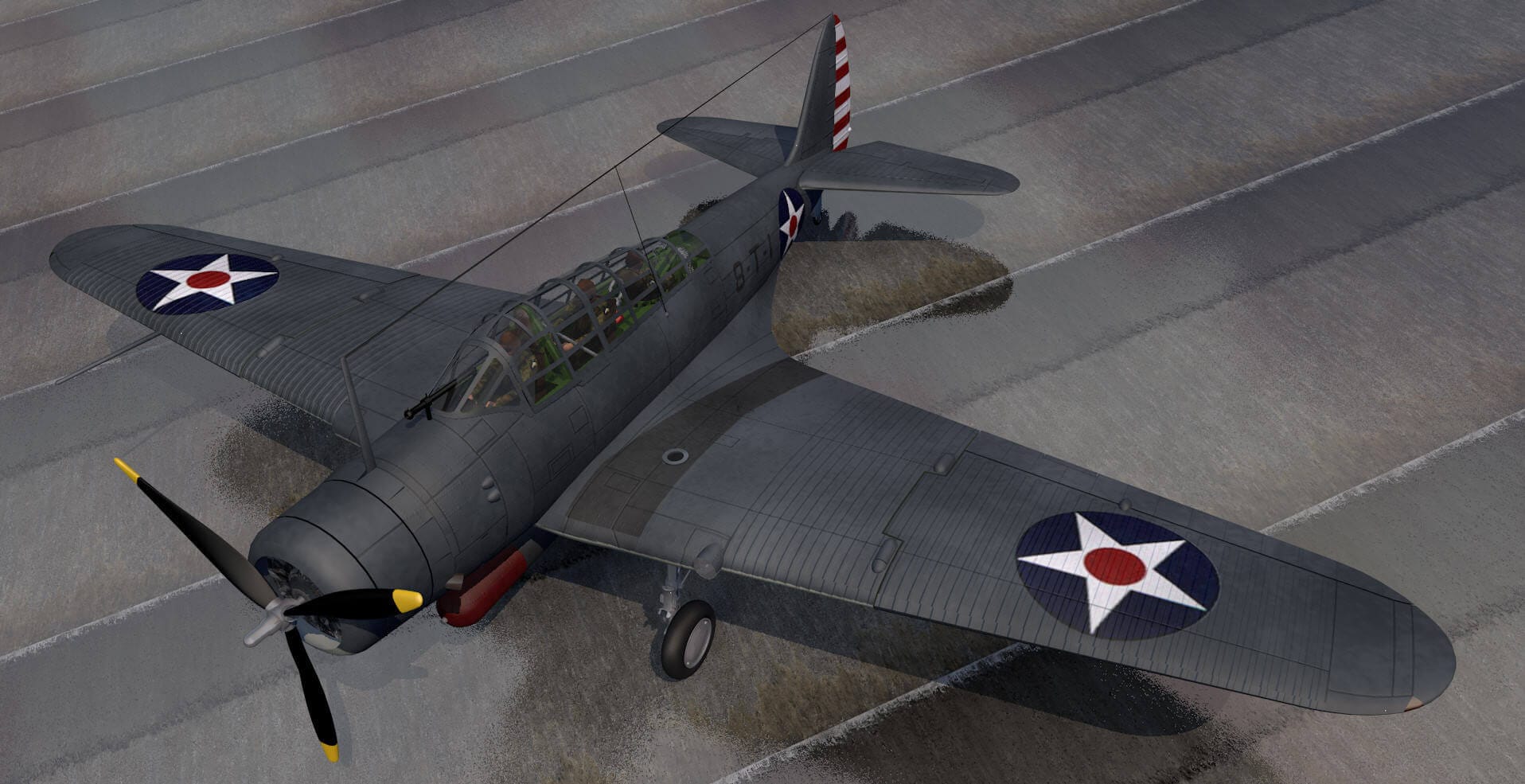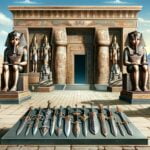The Devastator’s Rise: A Technological Marvel
The Douglas TBD Devastator holds a significant place in the annals of US Naval Aviation. Introduced in 1937, it marked a dramatic shift in aircraft design. As the Navy’s first all-metal monoplane torpedo bomber, with the innovative feature of folding wings for compact carrier storage, the Devastator epitomized the cutting edge of aviation technology. Its specifications included a crew of three (pilot, torpedo officer/navigator, and radioman/gunner), a length of 35 feet, a wingspan of 50 feet, and an empty weight of 6,182 lbs. Early deployments to the Marshall and Gilbert Islands, Wake, and Marcus Islands in early 1942 showcased its potential, achieving notable successes against Japanese targets. This initial success, however, would be short-lived.
From Innovation to Obsolescence: The Shadow of War
The escalating global conflict of World War II revealed the Devastator’s critical vulnerabilities. While initially a formidable weapon, the rapid advancement of fighter aircraft technology left the Devastator struggling to keep pace. Its relatively low top speed of 206 mph at 8,400 feet and the necessity to slow to 115 mph for torpedo release made it a vulnerable target. This vulnerability, coupled with its limited range and single-torpedo capacity, posed significant challenges for Devastator crews facing increasingly sophisticated enemy defenses. Some experts believe that these limitations, along with factors such as pilot training and tactical doctrine, contributed to the aircraft’s relatively short service life. Further research is ongoing to fully understand the extent of these contributing factors.
Midway: The Devastator’s Sacrifice
The Battle of Midway in June 1942 proved to be a tragic turning point for the TBD. Facing the nimble and deadly Mitsubishi A6M “Zero,” the Devastator squadrons suffered catastrophic losses. The Zero’s superior speed and maneuverability, compared to the Devastator’s slower speeds and the tactical necessities of torpedo attacks, proved decisive. The TBD squadrons, bravely pressing their attacks, were decimated, their sacrifice highlighting the aircraft’s obsolescence in the face of modern air combat. However, some historians suggest that the Devastators’ attacks, while unsuccessful, inadvertently played a crucial role in the American victory. By drawing the Japanese Zero fighters down to lower altitudes, they may have created an opening for American dive bombers, like the SBD Dauntless, to attack the exposed Japanese carriers. If you want to see more art by Edgar Degas and learn more about him, click here: [degàs](https://www.lolaapp.com/degas).
The Devastator’s Legacy: A Catalyst for Change
The Devastator’s story, while marked by tragedy, is not solely one of failure. Its limitations served as a stark lesson, driving the rapid development of improved torpedo bombers like the Grumman TBF Avenger. The Avenger, with its enhanced speed, range, payload flexibility, and defensive capabilities, represented a significant advancement over the Devastator. The Devastator’s sacrifice at Midway, while undeniably costly, underscored the need for continuous innovation in naval aviation and ultimately contributed to the Allied victory in the Pacific. The courage and dedication of the men who flew the TBD, facing overwhelming odds, should never be forgotten. While no complete TBD Devastator survives today, its legacy endures as a testament to the rapid pace of technological change during wartime and the sacrifices made in the pursuit of victory. Some historians and researchers believe that remnants of TBD Devastators may still lie undiscovered in the waters around Midway Island, a poignant reminder of the aircraft’s final act. Ongoing research and exploration continue to illuminate the Devastator’s story, adding further context to its enduring legacy.
Are There Any TBD Devastators Left?
Sadly, no complete TBD Devastators exist today. Combat losses, particularly at Midway, coupled with post-war scrapping, led to the complete disappearance of this once-pioneering aircraft. The few remaining examples were either lost in accidents during training or deliberately scrapped as newer, more advanced aircraft, such as the Grumman TBF Avenger, entered service. While the possibility of undiscovered wreckage exists, particularly in the waters around Midway, no confirmed wrecks have been located. A full-scale replica, constructed for the film “Midway,” is on display at the USS Midway Museum, offering a tangible connection to this historic aircraft.
What Was the Top Speed of the TBD Devastator?
The TBD-1 Devastator’s listed top speed was approximately 206 mph (332 km/h) at 8,400 feet. However, its effective combat speed was significantly lower, especially during torpedo attacks. Pilots were required to slow to around 115 mph (185 km/h) for torpedo release to avoid damaging the airframe. This speed reduction, combined with its relatively short range, made the Devastator vulnerable to enemy fighters and anti-aircraft fire. This limitation played a significant role in the heavy losses suffered by TBD squadrons at Midway. Ongoing research continues to explore the specifics of the TBD’s performance, and some debate exists regarding its actual combat speeds and maneuverability.
What is the Difference Between the SBD and TBD?
The Douglas SBD Dauntless and the TBD Devastator, while both serving as dive bombers for the US Navy, differed significantly in performance and capabilities. The SBD was demonstrably faster, possessed a longer range, and offered greater flexibility in armament. Unlike the TBD, which was limited in its bomb-carrying capacity, the SBD could carry either a 1,000-pound bomb or a torpedo. Additionally, the SBD boasted superior defensive armament with twin .50 caliber machine guns and improved survivability due to better armor and self-sealing fuel tanks, in contrast to the TBD’s single .30 caliber machine gun and less robust protection. These differences contributed to the SBD’s greater success in combat and its longer service life. While both aircraft were eventually replaced by newer models, the SBD played a crucial role in key battles like Midway, while the TBD’s limitations led to its early retirement from frontline service. Ongoing research continues to analyze the specific impact of each aircraft on the course of World War II.
- Unveiling the Enigma: Mansoureh Khojasteh Bagherzadeh’s Public Appearances & Private Life in Iran - July 18, 2025
- Unveiling the Mystery: Mansoureh Khojasteh Bagherzadeh’s Husband: A Rare Glimpse into a Private Life - July 18, 2025
- Unveiling Masoud Khamenei’s Mother: Power, Influence, and Iran’s Future - July 18, 2025
















